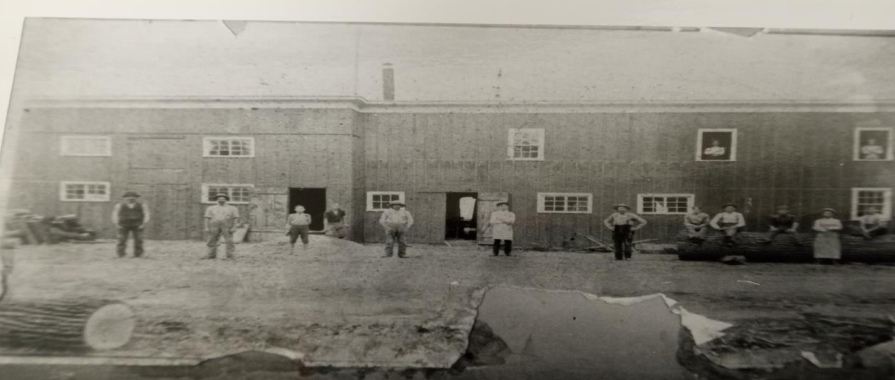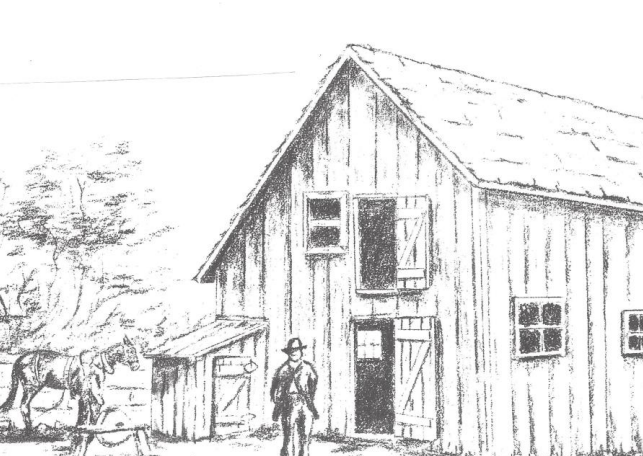A brief history of the basket-making business in Rockwood


ROCKWOOD— Rockwood, the Basket Capital of the United States?
Today, we go to the store and buy a few groceries at Save-A-Lot, Meijer or Kroger. When paying for our purchases, we take those items and usually place them inside a plastic bag provided by the store. However, there was a time when there were no plastic bags, only brown paper bags of three different sizes. Grocery stores started using plastic bags around 1979.
Paper bags made their debut in grocery stores in New York around 1883, after Margaret Knight perfected the square, flat-bottom bag in 1870. But there was a time when there were very few to no paper bags.
So, what did people do when they had to go to the store—or the market, as it was normally called back in those days? Customers brought their own receptacles. Some were made from light-weight cloth, but didn’t hold up well due to the weight of the items. Some had paper bags, but those were flimsy for heavy loads and would tear easily.
The only other alternative was a wooden basket. And guess where most baskets in the United States were made in the late 1860s to 1920? Right here, in Rockwood. Yes, that’s true. So why was this area so noted for baskets? It was due to the type of woods that grew in this region, especially the prevalent maple and honeysuckle trees. (Even though honeysuckle is more like a vine, it is classified as a tree.)
There were four basket weaving factories in Rockwood during this period: The Baumeister Factory, the most famous producer; The Schmitt Basket Shop, The Shabinaw Home and Basket Shop, and The Metzger Homestead and Basket Shop.
The largest shop was the Baumeister Basket Factory, located on the site of St. Mary’s School on Church Street in Rockwood. It was the largest shop and produced baskets from 1862 to 1919.
Frederick Baumeister immigrated with his parents from Germany when he was 10 years old and settled in New York State before moving to Michigan in 1852. He married Matilda Melancon in 1860. Together, they had 12 children, including seven sons who eventually learned the trade.
The business began in a small shop, with Mr. Baumeister making baskets by hand from the ash trees that grew so prevalently in the area. By 1899, they built a two-story basket factory on Church Street. The family specialized in making covered baskets of all sizes, from very small ones to bushel baskets. Mr. Baumeister even won a gold medal at the World Columbian Exposition in Chicago in 1893 for their distinctive diagonal basket design.
By 1908, 840,000 baskets were being shipped all over the United States, England, Australia and New Zealand. Because of the demand, a second factory was built in Gladwin, Michigan and a third in Little Rock, Arkansas. The Rockwood factory continued to make improvements to its manufacturing process and design through 1917.
Unfortunately, World War I dealt a devastating blow to the basket-making business. Machinery parts became more expensive as did lumber. Also, there was a worker shortage due to the men fighting in the war overseas. By 1919, the factory had to close its doors. Mr. Baumeister passed away three years later.
Our second basket maker was the Schmitt Basket Shop. The Schmitt Basket Shop was built in the late 1880s and located on the north side of Huron River and Swallow Drives. The shop was in operation for about 20 years when baskets fell out of fashion and brown paper bags were more convenient. The following is an excerpt from “The Schmitt Basket Shop” by Mary Ellen Viau, granddaughter of Joseph and Margaret Schmitt, “In the early 1880s, my grandparents, Joseph and Margaret Schmitt, emigrated to the United States from Alsace, Lorraine, [a region] on the border between Germany and France. It was an area that was predominately Catholic. The couple had two children at the time, and Margaret was pregnant with their child. The trip was extremely difficult for Margaret—they traveled steerage class--and she was so ill that she had to stay in bed for most of the voyage. When they finally arrived, they were greeted with the distressing news that Margaret’s brother, who had persuaded them to join him in the new world, had died while they were enroute; it is said [that he passed] of sheer loneliness. My grandparents, Joseph and Margaret, made their way to Rockwood, Michigan, where Joseph established a basket shop. In the ensuing years, the family grew and prospered in their new home. In 1895, Joseph died, leaving my grandmother with seven children to support, ranging in ages 5 to 17. Although it was nearly unheard of for a woman at that time to be involved in business, Margaret took over the basket shop and ran it with the help of her sons and two or three employees. By about 1910, however, the demand for hand-made baskets had decreased. The older boys were married and starting their own families, and the shop was not making enough to support them. They all moved to Detroit where opportunities for employment were more available. Grandmother Margaret was a very strong woman, who they say, demanded and got obedience and respect from her children whom she ruled with an iron hand, tempered by love. Until she died in 1924, she reigned as the matriarch of the family, their spouse, and their grandchildren. In many cases, they deferred to her wishes and opinions.”
A third wooden basket-making business was The Shabinaw basket-making shop, located in the area where the Rite-Aid parking lot and the Double D's Bar are located on the corner of Fort Street and Huron River Drive.
After marrying Margaret Lezotte in 1891, William Shabinaw secured a job working for Joseph Schmitt between 1891. He learned the trade and by 1896, he struck out on his own. He made baskets in his own shop, located next to his home. Will used basswood trees from neighboring forests, have the logs drawn through the woods to his home for cutting into planks. His business thrived, shipping large orders by rail to places as far away as Colorado and Texas.
Unfortunately, a fire devastated both his home and the shop in 1901, leaving it in ruins. He and Margaret then moved their eight children to a smaller home on Olmstead Road and Huron River Drive. Unfortunately, Will lost his wife and daughter, Eleanor, in 1907, leaving Will to raise seven children by himself. He then went to work at The Baumeister Basket Factory until it closed in 1919. After securing his new job, he bought an old farmhouse, located on W. Jefferson Road., and physically moved it to Church Street in Rockwood. The home was located across from St. Mary’s Rectory. He then erected a barn and bought a few cows, selling milk to families in the area through the 1920s, with his children making the deliveries. When the factory was sold and torn down to make way for a new school, Will became the custodian of the church. He was still on the job until his death in December, 1960.
Finally, there was The Metzger Homestead and Basket Shop. Much like the Shabinaw enterprise, the shop was built behind the family home on St. Stephen’s Street. Charles Metzger, who immigrated from Baden-Baden, Germany, at age 16, trained as a tailor in Toledo. Attending a church social in South Rockwood, he met Sarah Frankhouse, and they married. They had 16 children. It was truly a family-owned business. Everyone worked in the shop, preparing the planks, weaving the baskets, sweeping and disposing of the wooden shavings, caring for the horses who powered the saws and distributing handbills to customers after delivery. Many of the baskets were shipped by rail to the western states. Again, World War I ravaged the business. Five sons leaving to march off to war. When the war was over, they returned but chose other occupations. The last load of baskets was shipped in 1922 and the shop folded.
That is the brief history of the basket-making business in the Rockwood area. So, the next time you see a basket, it might have been made in Michigan, right here in Rockwood.
Barb McCoy is a member of the Rockwood Historical Society. She expanded an article written by the late Pat Quick.
This article originally appeared on The Monroe News: Rockwood once had four basket factories

